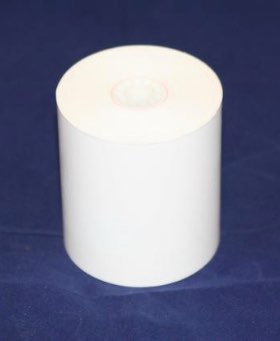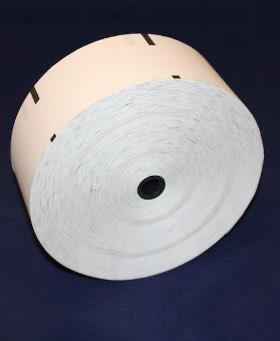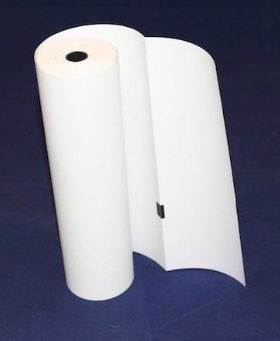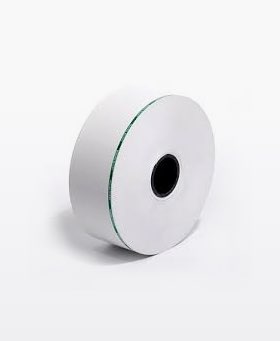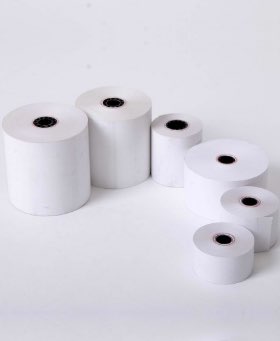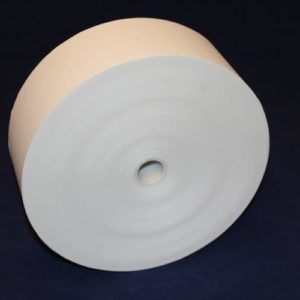
The Significance Of Thermal Paper In The Restaurant Industry
Thermal paper is a special type used in the restaurant industry for printing receipts. In most restaurants, thermal receipt paper is used to print customer orders and provide customers with an itemized list of what they are ordering at the time of their purchase. Thermal paper has several advantages over traditional paper, making it essential in many restaurants today.
Thermal receipt paper offers an extremely cost-effective solution for printing restaurant orders. The special coating on the paper’s surface eliminates the need for costly ink cartridges or printer maintenance fees required with other types of receipts. This was a small summarized idea about thermal papers. Let’s read on further about their importance in the restaurant industry.
Introduction: What is thermal paper and why is it crucial for restaurants?

Thermal paper is a unique type of receipt designed to print restaurant receipts and other documents. It has a special coating that reacts with the thermal print head on the printer, allowing it to produce images quickly without requiring ink or toner. Thermal paper is an essential component in restaurants, as it provides an efficient way to record customer orders effectively. In addition, the receipts generated can be used for tracking expenses and monitoring employee performance. Furthermore, thermal receipt papers provide a professional look that customers appreciate and respect compared to hand-written receipts, making them more likely to return to the restaurant.
The benefits of using thermal paper are numerous:
- It produces crisp, clear images that last long.
- They are easy to read and understand even after a long time.
- They are durable and tear-resistant, making them ideal for preserving any evidence of customer orders.
Additionally, they can easily be stored as digital records, which makes tracking sales more efficient and accurate. Furthermore, thermal paper is more cost-effective than other types of printing paper as it does not require ink or toner to work. All these factors make thermal paper an invaluable tool for restaurants to provide customers with accurate documentation of their orders.
The benefits of using thermal paper in restaurants

The same benefits of thermal paper are vast. It is a cost-effective and efficient way to print customer receipts quickly and accurately. Thermal paper is also more durable than regular paper, as it doesn’t require ink or toner for printing. This makes it the ideal choice for restaurants that need to keep track of their transactions during large rushes of customers. In addition, the prints produced by thermal receipt paper are clear and legible throughout their life span due to the special coating on the top layer that ensures no smudging or fading occurs over time.
In addition to all these benefits, thermal papers have tight, secure rolls, making them very resistant to dust particles or other contaminants. This makes it the perfect choice for restaurants that handle a large volume of customer transactions each day. Thermal paper is also very economical in terms of cost, as it can be bought in bulk at discounted prices.
How thermal paper can help improve efficiency and accuracy in restaurant operations?

Thermal paper is an essential tool in the restaurant industry. It is a type of paper that does not require ink or toners to produce a printed image, making it faster and more cost effective than other traditional printing methods. Thermal papers are also more reliable as they do not fade or smear over time, resulting in clearer images that are easier to read. In addition, they can help reduce human errors when creating orders and processing payments by providing an automated record of all transactions made throughout the day. This improves accuracy helps streamline operations, and ensures customers receive accurate bills on time, leading to better customer satisfaction.
Thermal papers are also significantly more environmentally friendly than traditional printing methods as they do not require ink or toners. This makes them a great sustainable option for businesses looking to reduce their carbon footprint. Overall, thermal paper is an economical and effective solution for restaurant operations that help restaurants improve their efficiency, accuracy, and sustainability goals simultaneously.
What are the different types of thermal paper and which one is best for your business?

Several varieties of thermal paper are available, each with different benefits and drawbacks depending on your business needs. The most common form of thermal paper is carbonless paper. The carbonless paper contains three layers:
- The top layer, which absorbs the heat from the printer.
- An intermediate coating, which transfers the heat between layers.
- A bottom layer reacts to the heat by producing an image or text.
Another type of thermal paper is direct thermal paper, which does not require an intermediate coating. Instead, the heat directly affects the bottom layer of the paper to produce an image or text. Direct thermal paper requires less energy than carbonless paper and can print faster; however, its images are sharper and tend to fade quickly over time.
Finally, transfer receipt paper uses heat-sensitive ink instead of relying on a chemical reaction to create an image or text on the page. As a result, transfer receipt paper has a longer shelf life than direct thermal paper, but the images usually need to be sharper.
Tips on choosing and storing the right thermal paper for your restaurant

Some key factors must be considered when selecting and storing thermal paper for your restaurant. Thermal paper is the type of paper used in most restaurant receipt printers and cash registers. You must choose the right kind of thermal paper for your needs, as the wrong choice can result in faded or illegible receipts, clashing prints, or even damage to your printer. Here are some tips on choosing and storing the right thermal paper for your restaurant:
- Consider the type of printing you’ll be doing. For example, if you plan to print full-color images, you should look for high-quality thermal paper with good color reproduction capabilities. On the other hand, if you only need to print basic black text, then a more plain thermal paper should suffice.
- Consider the amount of use your printer will get and choose a type of thermal paper that can withstand frequent use without fading or smearing. Look for thermal papers with good durability ratings to ensure reliable printing performance over time.
- Choose a thermal paper with the right size and shape for your needs. Most restaurant receipt printers only accept certain sizes and shapes of thermal receipts, so selecting one compatible with your equipment is important.
- Make sure you store your thermal paper correctly to keep it in top condition until it is needed again: always store rolls upright (do not stack them) in a cool and dry environment away from direct sunlight. Keep the rolls away from strong heat sources, and remove them when you are done using them for the day.
Conclusion
In conclusion, thermal or receipt paper is a great option for businesses that print receipts for their customers. Not only is it reliable and cost-effective, but it also helps to protect the environment by eliminating the need for single-use materials. Thermal paper has become increasingly popular in the restaurant industry as a way to reduce waste and save money without sacrificing quality. Whether you’re printing receipts or other documents, thermal paper is an excellent choice for businesses large and small.

